Conus kwajaleinensis (Monnier, Prugnaud & Limpalaër,
2022)
Kwajalein cone,
71mm
Conus
kwajaleinensis is a common lagoon dwelling cone formerly considered a variety
of Conus magus. It lives on the interisland reefs and occasionally
lagoon pinnacles. It usually buries in sand, sometimes beneath rocks, during
the day and emerges at night to hunt fish. As a piscivorous species, it has
a potentially dangerous venomous sting and should be handled with care. Specimens
have been found at depths ranging from about 3 to 30m. The species varies considerably
in coloration, from nearly all light cream-colored to sporting various amounts
of brown spiral bands or even black streaks arranged more or less in spiral
bands. Some specimens can be confused with some forms of Conus
circumcisus. As one of the most common fish-eating cone shells, Specimens
of Conus kwajaleinensis (as Conus magus) have been used extensively
in venom studies. As noted in Wikipedia,
Ziconotide is a chemical derived from the Conus magus venom that acts
as a painkiller with a potency 1000 times that of morphine.
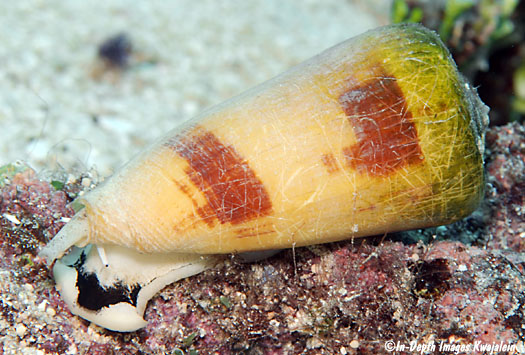
Below you can see the siphon coming out of the narrow anterior end of the aperture.
Below that is the mouth, flanked on either side by a short white tentacles with
a black eye. Below that is the anterior edge of the foot, which in this species
is white with a large black blotch.
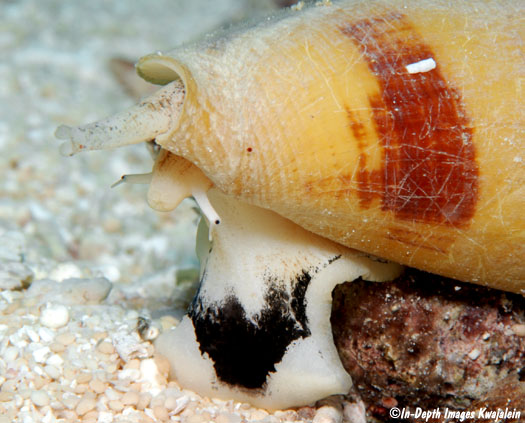
Like most cone shells, this species is covered by a brown translucent protein-based
periostracum.
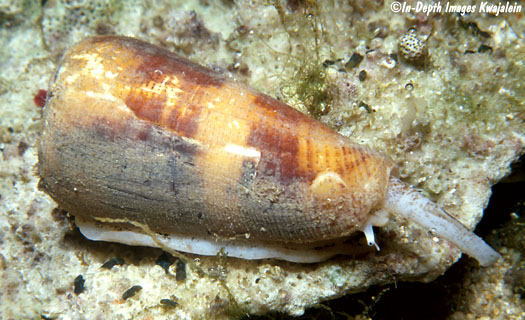
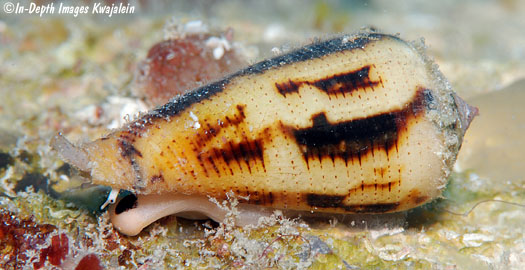
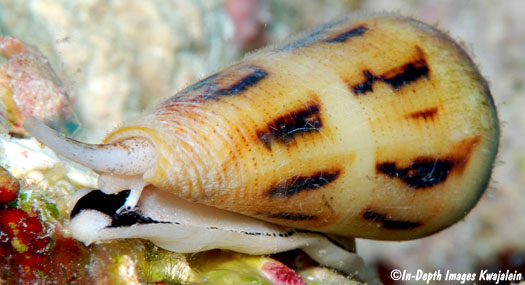
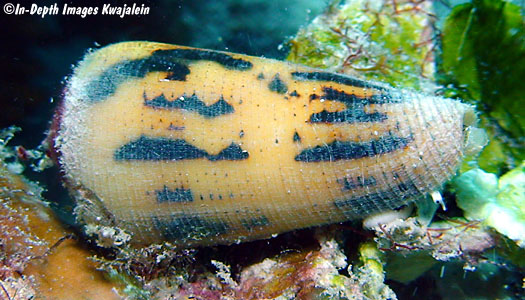
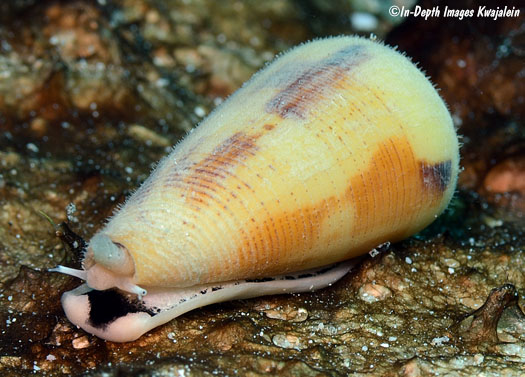
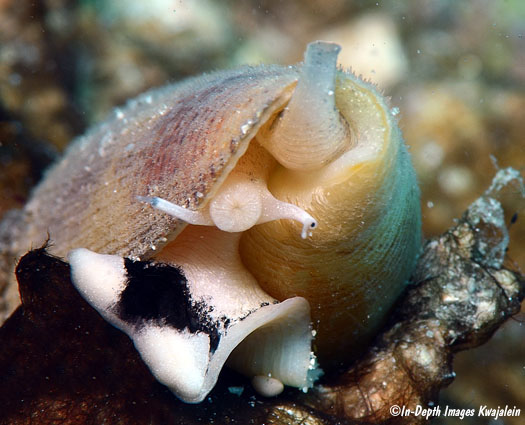
They lay their eggs in clusters
of whitish capsules glued to the undersides of rocks or Halimeda clumps.
Each capsule contains a number of white to light pink eggs.
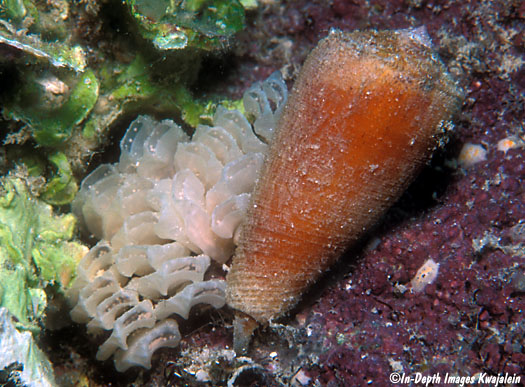
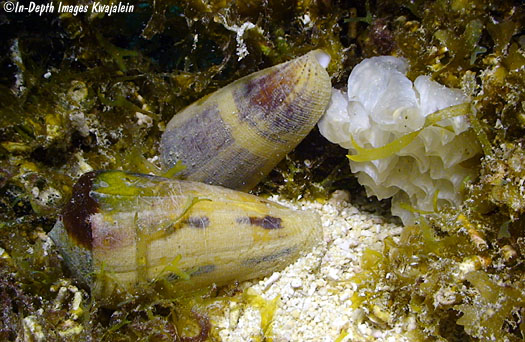
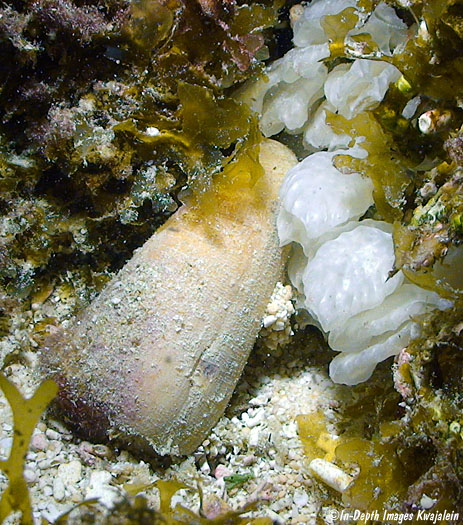
Looking down into the capsules,
you can see the individual eggs as small white balls.
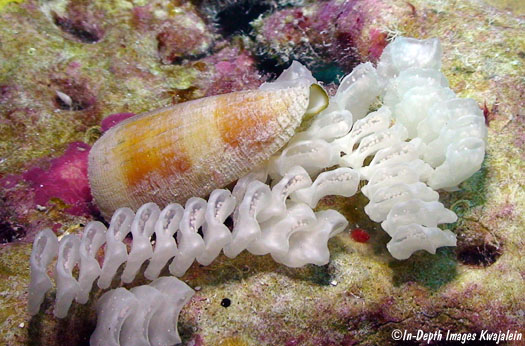
Juvenile.
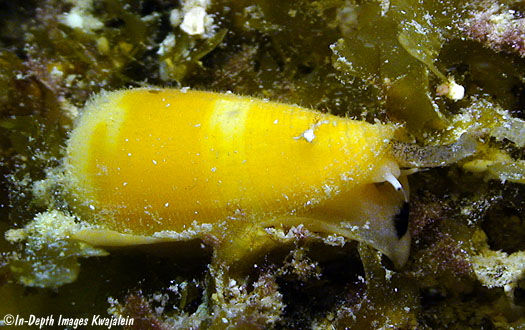
64.58mm paratype.
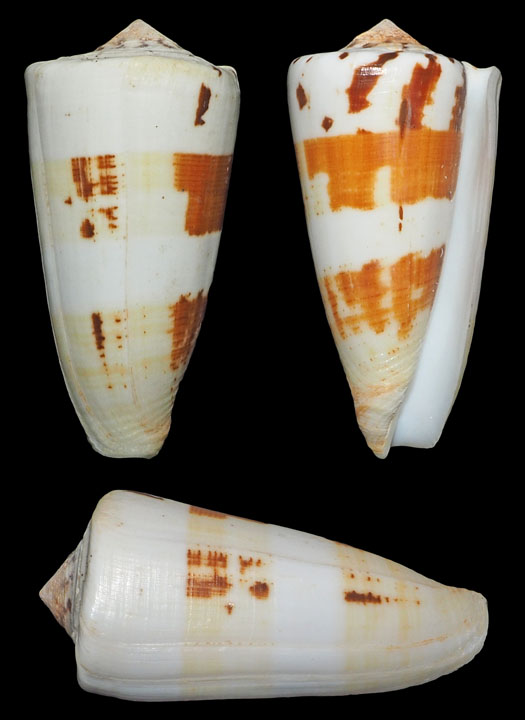
58.71mm paratype
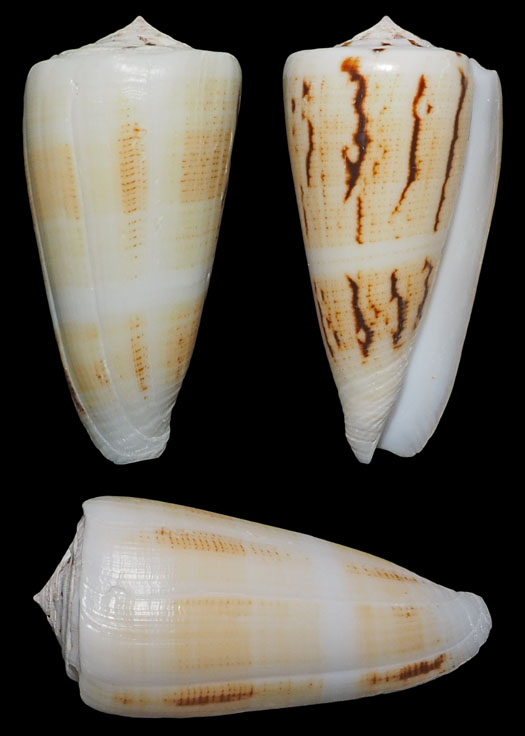
42.7mm holotype
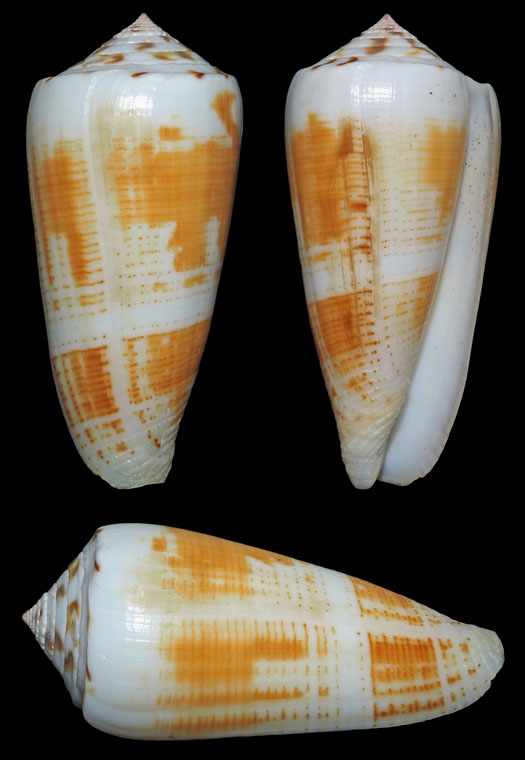
37.57mm paratype
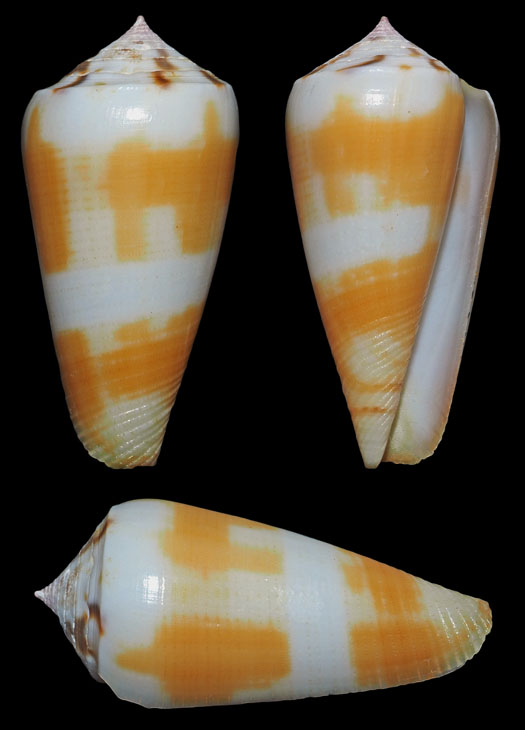
39.5mm
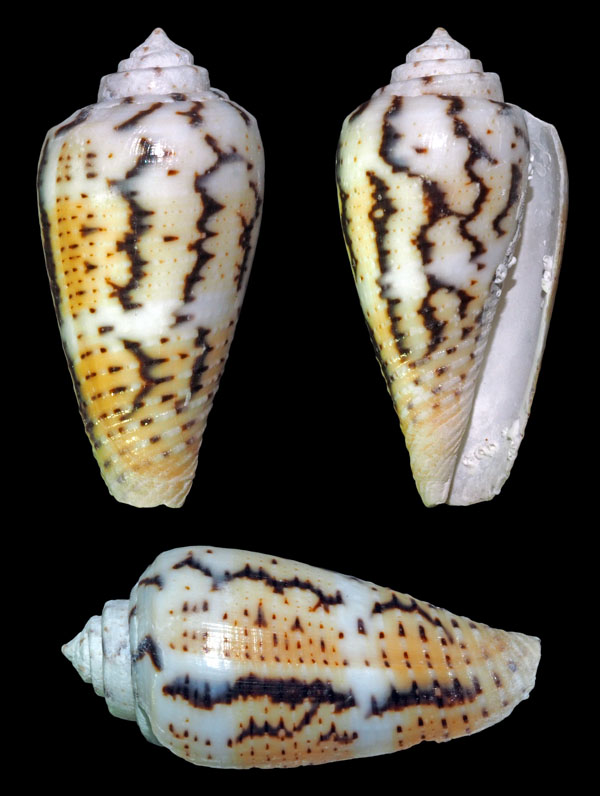
Created
4 July 2009
Updated 1 June 2024
Return to cones
Kwajalein Underwater home


















